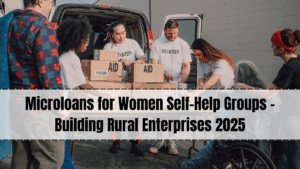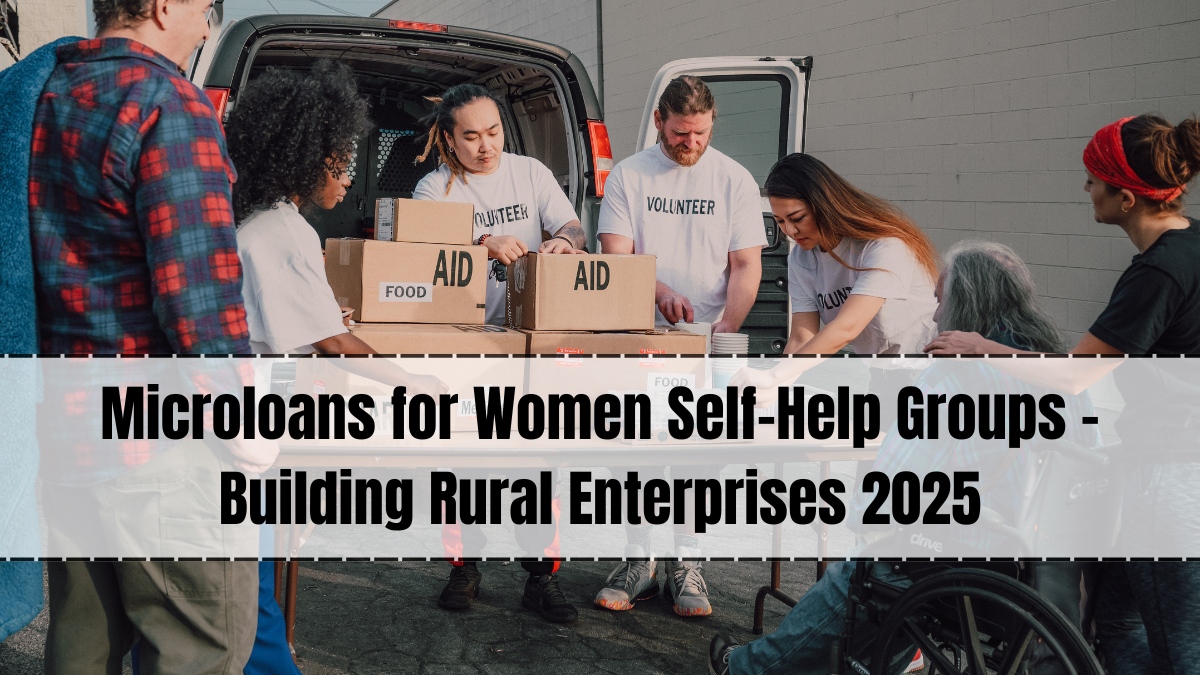In 2025, microloans for women self-help groups (SHGs) are playing a pivotal role in transforming rural economies. These loans, typically small in value but high in impact, give women access to credit without the burden of heavy collateral. They not only fund business ventures but also fuel independence, skill enhancement, and community development. With growing support from the government, NGOs, and microfinance institutions, these initiatives are reshaping rural entrepreneurship.

The Role of SHGs in Rural Development
Self-help groups, usually comprising 10–20 women, operate on collective savings and mutual assistance. Over the years, SHGs have evolved from simple savings groups to active business units in fields like tailoring, handicrafts, dairy farming, and food processing. By availing microloans for women self-help groups 2025, members can purchase raw materials, invest in better equipment, and access larger markets, leading to sustainable income generation.
Government and Institutional Support in 2025
The government’s flagship programs, such as the National Rural Livelihood Mission (NRLM) and Deendayal Antyodaya Yojana, have streamlined loan approvals, offered interest subsidies, and promoted digital banking access for SHGs. Banks and microfinance institutions now use mobile apps and online platforms for faster disbursal, ensuring that even women in remote villages receive funds promptly. This tech-driven approach is reducing the urban-rural gap in financial access.
Impact of Microloans on Women Entrepreneurs
-
Higher Household Income: Women invest in small-scale ventures, increasing family earnings.
-
Skill Development: SHGs often use part of their funds for vocational training in sectors like garment-making and agri-processing.
-
Community Benefits: Profits are reinvested in local infrastructure, education, and clean water projects.
-
Empowerment: Financial independence strengthens women’s voices in household and community decisions.
Challenges Faced by SHGs
While microloans for women self-help groups 2025 have brought positive change, challenges remain. Low financial literacy can cause repayment delays, and limited market access affects product sales. Agriculture-based businesses are vulnerable to climate fluctuations, and the absence of robust marketing strategies can restrict growth. Addressing these issues through training, mentorship, and market linkage programs is crucial.
Future Outlook for Microloans in Rural Enterprises
The integration of digital banking and e-commerce platforms is expected to revolutionize SHG operations. Platforms like ONDC (Open Network for Digital Commerce) are enabling rural women to sell products nationwide. AI-based credit scoring is making loan approvals faster and more reliable, ensuring that more women receive fair financing. The focus for the future will be on scaling these initiatives to reach every rural entrepreneur in need.
FAQs
What is the average microloan amount for women SHGs in 2025?
In 2025, the average microloan amount for SHGs ranges between ₹10,000 and ₹1,00,000, depending on the project size and credit history.
How do microloans help rural women?
They provide accessible credit for starting or expanding small businesses, improve household income, and enhance social and financial independence.
Are microloans available without collateral?
Yes, most microloans for SHGs do not require heavy collateral, making them ideal for rural women with limited assets.
Click here to know more.
